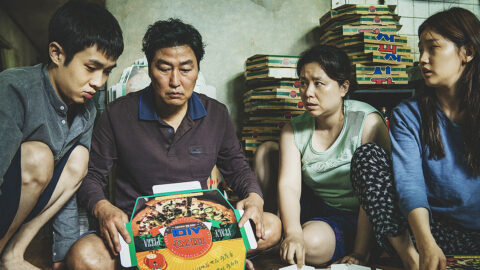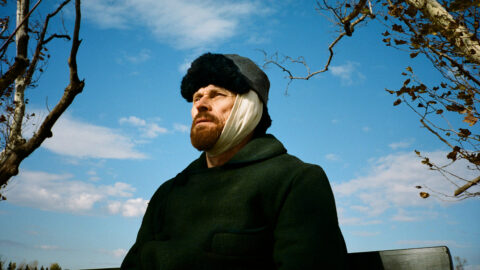Interview: Abel Ferrara and Willem Dafoe
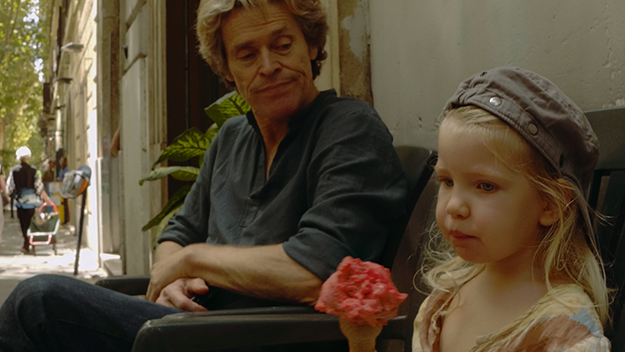
Images from Tommaso (Abel Ferrara, 2019)
For his first dramatic feature in five years, Abel Ferrara returns to the wellspring of personal experience that has served his cinema so well over the years. In Tommaso, Ferrara’s frequent lead Willem Dafoe plays a thinly veiled version of the director as a recovering addict and filmmaker living in Rome with his Eastern-European wife and their toddler daughter.
Shot on low-grade digital video in and around Ferrara’s own apartment and co-starring his wife, actress Cristina Chiriac, and their 3-year-old daughter Anna, Tommaso looks and often feels like the director’s recent forays into nonfiction filmmaking; with rough-and-tumble grit, Ferrara’s camera follows the title character with an energy bordering on the obsessive. As an American artist living abroad, Tommaso has a life that seems all but ideal: in between yoga sessions, teaching acting classes, and frequenting his favorite cafés, Tommaso works on his new movie. (Tantalizingly brief excerpts and storyboards from Ferrara’s long-delayed Siberia, reportedly in the final stages of editing, are seen throughout the film.)
But life is not as it seems: Tommaso’s past as a drug abuser—recounted in a series of harrowing Alcoholics Anonymous meetings—haunts him, while his wife’s suspected infidelity and his own psychological instability threaten to undo his idyllic existence. Working largely improvisationally, Dafoe is a whirlwind of self-doubt and inner turmoil; calling upon some of his most iconic characters (including, most provocatively, his role as Jesus in The Last Temptation of Christ), he careens through the streets of Rome as the walls of reality slowly collapse around him. The result is a fascinating dual portrait of two friends and collaborators who continue to push each other to new extremes.
Following Tommaso’s premiere in the Special Screenings section at the 2019 Cannes Film Festival, Ferrara and Dafoe sat down separately to discuss their unique working relationship, collaborating with friends and family, the film’s self-referential approach, and the thin line between fact and fiction.
Interview: Abel Ferrara
In your introduction last night, you called Tommaso a home movie. Because of the setting and the cast, people are probably going to think a lot about Willem as a stand-in for you as the main character. Can you tell us a little about these home-movie aspects and how they may or may not have developed from real life?
Well, obviously Cristina and Anna are in the movie, and the setting being what it is and life being what it is—it’s a springboard for us. But Willem’s not me. No matter how close our friendship is, or the fact that he lives in the same neighborhood. These are all things that I think we can use to get further from us in a strange way. We take the things that are very familiar to us so we don’t have to conjure things up. By being so based in a reality, I think that gives us the opportunity to really explore the possibilities and let our imaginations go and get out there with feelings and the character.
Can you talk about developing the dialogue or situations we see in the film and how you collaborated with Willem on developing the Tommaso character?
Well, me and him, we’ve made a lot of films together now. And I’m not going to pursue an idea that the whole group is not into. The people that are in the room—that’s part of it: the editor, the DP, and so on. We begin by thinking and kicking around ideas, and there’s always more than one. But the one that kind of hits home for everybody, that’s the one we start pursuing right away. As I’m writing, Willem’s aware of the the direction it’s going, and I’m getting feedback from him. And we weigh things. Sometimes scenes have more dialogue than others—some scenes are a little more specific. Other scenes, we keep ’em loose.
Why cast your wife and daughter in these roles?
Well, Cristina’s an actress. And with her and me on set, the baby’s there, too—it’s what the film’s about, you know? But we also shoot documentaries. After shooting this and Siberia we’ve made three or four documentaries. It kind of blurs the process between what’s real and what’s not.
Yeah, the documentary aspects of the film are really fascinating. Most of the characters we see in the film are real people playing themselves, correct?
Well, they’re real until you put a camera in front of them.
Right. How did that work with regards to the rehab scenes, then? Are these real people in AA, or did you cast these roles?
We didn’t cast any actors. I mean, some people are actors, but for this we’re not casting them as actors—we’re casting them as people in my life. But once they’re in front of the camera, the situation is what it is. When you do it all make-believe—even with actors and built sets—you still try to make it as real as possible. We tried to keep it real just so the magic could happen. You’re starting off real, but at the end of the day you still have to make the magic.
But I can’t really talk too much about that specific aspect because as part of recovery, anonymity is a big deal, so I can’t really get into the specifics of it. But, everybody’s cool with it. It’s like everything else in life. We push the limit of what everybody’s cool with it.
At this stage in your career, and especially after making so many documentaries recently, what inspired you to return to fiction? Does it take something extra special for you to return to narrative filmmaking at this point?
No, these documentaries are just a thing we do between features. You know, during the process of writing, financing them, putting them together. The documentaries are just these little things that we love, and they both feed off each other.
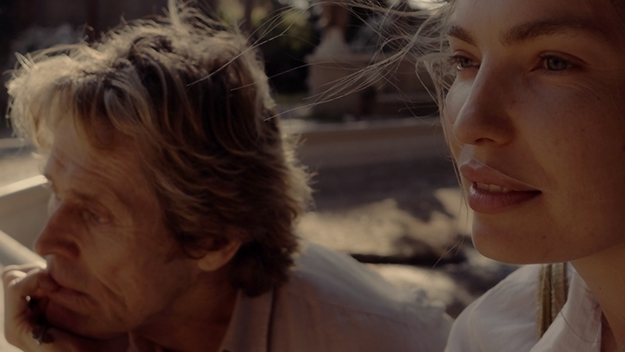
So what inspired this film, then? Was it the Tommaso character?
That’s a good question. What inspires anything? I don’t know…
Maybe something about the neighborhood or the fact that you’re neighbors?
I don’t know. I wish I could answer that. Why did we decide to do this one? Like I said, it was an idea. Sometimes when you’re writing crazy fiction somebody will tell you a story about their life and you think, “Wow, that’s so much more exciting than fiction.” Or sometimes I watch a movie and I know the people in the movie and I think, “Wow, it’s more interesting to have dinner with them than to watch their fucking movie!” Actors are interesting people, so why are their characters not interesting? When we’re making a movie sometimes I think, “Why don’t we just turn the camera around and shoot between wrapping at night and when the morning starts?” Sometimes you’ve got a better movie there than the one you’re making.
This movie seems to be made up of moments like that. What’s the collaborative process like with the actors while shooting? Are you guys mapping scenes in advance, or is more improvisational than that?
Some scenes were talked about, some were mapped out, some weren’t—they’re all different. The DP [Peter Zeitlinger] is a great shooter—he’s made a lot of great documentaries. So he’s aware of the way things are going to go and the manner in which we work.
How much footage are you shooting on average?
We’re shooting a lot. And we’ve got Fabio [Nunziata], a great editor, so we shoot with a lot of confidence. That’s the upside of digital. When you shoot in digital, you’re not thinking how much negative you’re going to buy. You know you’re shooting five minutes or 45 minutes—it’s no big deal. For us it’s cool because we can just let it run. It’s not like action, cut, you know—it’s just shooting. You know that when you come to work the camera’s on. You know and everybody’s on their toes and if something cool happens, things that you’re not prepared for or don’t know are going to happen, you’re shooting it.
What about some of the more symbolic scenes toward the end of the film, such as when Willem pulls his heart out, or the crucifixion scene outside the train station?
The Christ thing… Well, it’s something coming from inside Tommaso, whether it’s part of a movie he was in, or whether it was an idea for another movie, or maybe just what he dreams about. I’m sure you know the idea: Willem already played that role.
Right.
But Tommaso didn’t have to be a director—he could have been an actor, you know? We don’t know really what his background is. So theoretically we did pull that scene from Scorsese, because in reality that is Willem’s history. The history of Willem is that scene where he takes his heart out during The Last Supper, straight from Kazantzakis. The scene in Tommaso where we reference [Russian novel] The Master and Margarita, that’s something Willem could have been thinking about when he played Christ, you know? But things like these, and the modern day crucifixion—these are just crazy ideas.
Was it difficult to get permission to shoot in that square?
Yeah, that was shot in the terminal, in the main train station. But, you know, we live in Rome, and it’s an Italian production. We’re cool. We’re always cool on the streets. The same thing in the neighborhood—the people are all in. Sometimes Willem walked into those bars and they never knew we were coming—never mind permission. They don’t even know we’re showing up! But no one bats an eye because we’re the local filmmakers, and in Italy all the local filmmakers are making films. It’s not a big deal.
How long have you been living in Rome now?
Five years. I’ve been shooting for 20 years, half in New York, half in Rome. But living for the last five years in Rome. I met Cristina in Rome while shooting Pasolini, and then we had the baby.
Was there a desire on your part to document this time or this neighborhood—this part of your life? The whole thing feels very DIY, very personal.
Yeah, for sure, it is. I just wish I knew where these ideas come from! But to answer the question, I guess there is a documentary side to it. But so did Dangerous Game, which was a film about a director and the breakup of a marriage. All unhappy shit.
What draws you to back to such unhappy subjects?
Well, that’s life, you know? You have to deal with everything that comes with it, and with what comes with relationships. It’s a journey—especially relationships.
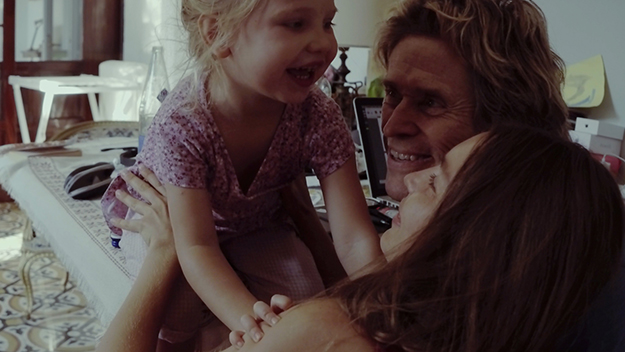
Interview: Willem Dafoe
You mentioned yesterday that all your collaborations with Abel have been quite different, that he allows you something collaboratively that you don’t get with other directors. Can you elaborate on that?
Sure, I’ll try. The easiest way to do it is to talk about this movie, which is a very personal movie. There are elements of both autobiography and elements that I invented. But Abel’s using what is around him. And because I’m his neighbor, and I’m his friend, some of those things are around me, too. So in our private and personal lives we have some overlap—we have the same kind of language in certain situations and in certain things that happen. So for this movie, using the things around us, using people from our neighborhood, using his wife and child in the film—I have special information about all this, you know?
Right.
And he trusts me, so we’re basically improvising. All of this is improvised. He’s basically telling me a story where he’s imagining something he may want to see and then we execute. That’s the most beautiful kind of relationship with a director, when the director is basically saying, “This is what I see: you sit here—put yourself in there and don’t show it, but inhabit it. Make that happen.” Particularly when you’re improvising there’s a huge responsibility. But I knew this material so well that I didn’t feel the pressure or the responsibility so much. Often when people think of improvisation, they think of actors making up clever dialogue. But that’s not so true. In this case in particular it’s about situations and it’s about interacting with people. We set up certain situations and you roll. Because we’re working with a very loose camera, it’s just a different way of making a movie and I enjoy it.
What was is like when Abel told you he wanted you to act opposite his wife and daughter?
We’re always talking. He has a big sense of family and the group of people that he makes movies with—more and more I’m part of that family. You know, we’ve made another movie together since this one. That’s the sixth one. So we’re always in touch and he’s always telling me things that he’s thinking about and that’s kind of how this was born. In some cases he’s telling me things like, “Let’s develop this.” Sometimes he’s not sure it’s a movie, but it may lead to a movie, so that’s where it starts. For this one he said he wanted to shoot it down and dirty—fluid; with a small budget; not a really long shoot; and he wanted to use his wife and his kid.
Was there any hesitation or fear on your part to work with his family, particularly as to a certain extent you’re playing a variation of him?
Yeah, a little. But I wouldn’t say I’m playing him. I’m playing certain situations that he’s putting in that’s he’s personally connected to. That’s the polite way to say it. [Laughs] It’s a responsibility and with that responsibility, I have to take care. And that’s an interesting job to have as an actor. And not only taking care as an actor blending in with non-actors, but not sticking out and not being an actor, you know—just being a person with these people. That’s what’s exciting. So whatever trepidation you have or whatever worried feelings you may have about not working in a professional aesthetic, I’m okay with that. Because I’ve oftentimes had very good experience working with people who aren’t professionals.
Abel mentioned that the Tommaso character is made up of a combination of things brought in by him and by you. Can you talk about some of the things that you brought to the character?
It’s little things. Like, Abel doesn’t do a yoga practice. [Laughs] But he does meditate—he does an asana. So I bring the yoga and he brings meditation, but he doesn’t do the kind of mediation that I do, so the meditation that you see me doing is part of my practice. So little things like that. Another example: he has students that he teaches, to whom he usually just talks. I don’t teach much, but I have done workshops and master classes. When I do it, it tends to get physical, it’s a physical form of teaching. So those scenes with those acting students, that’s me improvising a class, shot over one day—pretty much the whole day. It’s just me having a class with these kids. So I’m bringing that, because it’s stuff that I’m interested in and things that I’m doing. That’s the reality of it. That’s our only obligation. We have no obligation to our particular character because we’re doing something real, and the camera’s recording.
So those are a couple things that come to mind. But it’s no fun for us to say, “This is what I brought, this is what you brought.” Because its very mixed, and when you’re doing it, you don’t care. That’s what good collaboration is about. You don’t really care what comes from where. It’s all for God and country, you know? It’s loyalty to the project that really brings out the best of everyone. If they don’t lose their nerve.
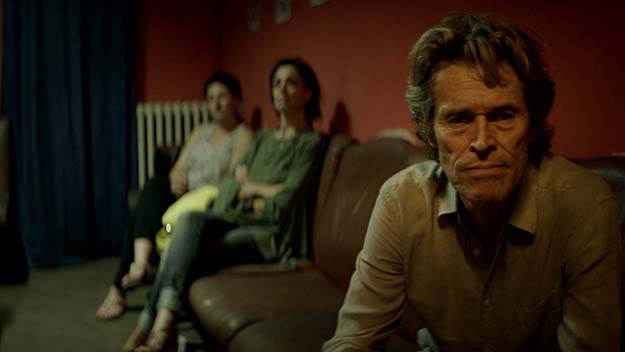
How was it working with the nonprofessional actors in the AA scenes?
They’re very practiced at doing shares, so that wasn’t a big concern. They’re better at it than I am. But they’re not actors, so they teach me, they show me what’s going on. I was the newbie! I was the guy that had to come into that meeting and fit in and not be a hambone and be sincere and do a share. Even though that’s not my life. It is the character’s life and it’s a story that’s been told to me and I have to tell it in my own words. So that’s interesting. There’s great feeling in that, because I have very strong direction, in that I’m told the story I need to tell and then it’s up to me to tell it in my own words.
Did you spend time with these people and listen to their stories at all before filming?
No. This was gunning. Almost everything was the first time we had done something. For example, to tell you how incredibly loose and kind of free-falling this was: the scene where I run down five floors to stop the homeless guy from screaming, I had never seen that guy before. He had been instructed to scream and was told a guy is going to come down and talk to him. That’s all he knows. But I’ve never seen him before. I can hear him screaming but I can’t see him. So then I run down and the camera comes down with me in real time, and I see this guy for the first time and I want to tell him to shut up and get him to move on, that’s my task. And then he comes back at me verbally and that becomes the scene. It’s pretty cool.
Yeah, very.
In that case I think we did do a second take, because the first time he kept on saying, “Where’s my 50 euros, where’s my 50 euros!?” Which is what they promised him to stay there and do the scene. [Laughs]
That’s amazing.
Yeah, so we did it again. But I think we ended up losing the first take. One other thing that’s very liberating about shooting in this way is that you don’t get coverage. You do things and you do it again and you never try to replicate it, because it’s going to be one or the other, because it’s a fluid camera and you’re not anticipating a cut. That’s not to say that’s the only way to make movies. God knows. I don’t know if you’ve seen The Lighthouse: it’s a beautiful movie, but it’s the direct opposite. It’s a very designed, very controlled, very written movie. And I think it’s really good: it’s not dead or canned or too aestheticized. You really feel it, but that’s a much different way of shooting
Do you have a preference for one way over the other?
I appreciate both. You know, you’re not going to eat beans every day of your life. You gotta eat some greens, too.
Abel and I were just discussing some of the more symbolic scenes in the film that draw on some of your past performances, and your role in The Last Temptation of Christ in particular.
He was very insistent about that. I wasn’t sure right away.
Because it draws on one of your most famous roles?
Yeah, I felt like that. But Abel’s so steeped in Catholicism. I had to give him that. And also I kind of like the funkiness of those scenes. I mean, that part when I rip my heart out in front of the African immigrants—they’re part of our life. I wasn’t sure about the scene, but he felt deeply about it. So once he says that, I’ll jump in. If he feels that way I’ll go with him. And similarly with the crucifixion scene, just because it’s so beautiful. But that’s almost like a performance-art piece.
Those were real people out there watching you in the middle of the square?
We just went up there and did it. It must have been kind of weird and strange for them—they’re all just watching it. And at that point you get very close to a real crucifixion. You couldn’t have that kind of real curiosity and confusion otherwise. It’s kind of like a public humiliation. It was an interesting dynamic. And of course there’s so many modern elements in it. Any crucifixion scene is going to harken back to other stories and other movies, but you’re a fool if that’s all you sit with.
Jordan Cronk is a critic and programmer based in Los Angeles. He runs Acropolis Cinema, a screening series for experimental and undistributed films, and is co-director of the Locarno in Los Angeles film festival.



